Salamanca
Famed for its 12th Century prestigious university, Salama...
Douro River cruises provide a delightful way to experience the dramatic scenery and sun-soaked river cruise destinations of Spain and Portugal. At just over 550 miles in length, the Douro is the third largest river on the Iberian Peninsula. Originating near the town of Duruelo de la Sierra in northern Spain, the river flows gently across central Spain and northern Portugal to its outlet into the Atlantic Ocean, where you’ll visit beautiful Porto, Portugal’s second-largest city.
The Douro may be one of Europe’s lesser-known rivers, but it is undoubtedly one of the most beautiful as it meanders its way through the spectacular rural Iberian countryside. Douro river cruises also provide ample opportunity to visit hidden European river cruise gems and great cities such as Porto, one of the most beautiful cities in the Iberian Peninsula; stunning Salamanca, a UNESCO World Heritage Site with a tumultuous past and arguably the best preserved of the old Spanish cities; as well as the Portuguese capital on a Lisbon river cruise.
A Douro River cruise through Portugal and Spain heads to many iconic locations. Cruising from some of Europe's finest locations on the Iberian Peninsula.
Porto is situated on the banks of the shimmering Douro River and is Portugal's second-largest city. The metropolis’ stunning city centre has been designated a UNESCO World Heritage Site due to its historical significance, and visitors will find an abundance of beautiful landmarks and architecture to discover here.
A river cruise in Porto also allows you to see numerous other wonderful districts to explore, each with its unique charm and character. Shop for souvenirs at a local market, dine out at a local restaurant and sample authentic Portuguese cuisine, or simply wander the city streets and soak in the region’s enchanting ambience under the warm Mediterranean sun.
Although the city is not located on the banks of the Douro, most Douro river cruises in Portugal offer the opportunity to visit the beautiful capital of Lisbon either at the beginning or end of a voyage. This beautiful coastal capital is comprised of numerous fabulous districts and charming neighbourhoods, where an array of stunning, architecturally quaint areas can be found.
Visitors to the city will also relish the opportunity to take a ride on one of several fantastic funiculars, including the Gloria, Bica, Lavra and Santa Funiculars, which help to connect the city. From parks, gardens and palaces to museums, galleries and areas of natural beauty, Lisbon is a city of authentic culture and charm.
Located in western Spain and dissected by a tributary of the Douro, a Salamanca river cruise allows you to experience the best of this historic city, boasting both a fascinating heritage and a contemporary modern culture. Some of the city’s most impressive historic sites include the old university and the 15th-century House of Shells, as well as Plaza Mayor – a bustling square filled with wonderful cafes, restaurants and shops.
Just outside of Salamanca lie a number of tranquil Spanish villages, including the charming commune of Bejar, which offers a look at authentic Spanish culture outside of the lively city centre
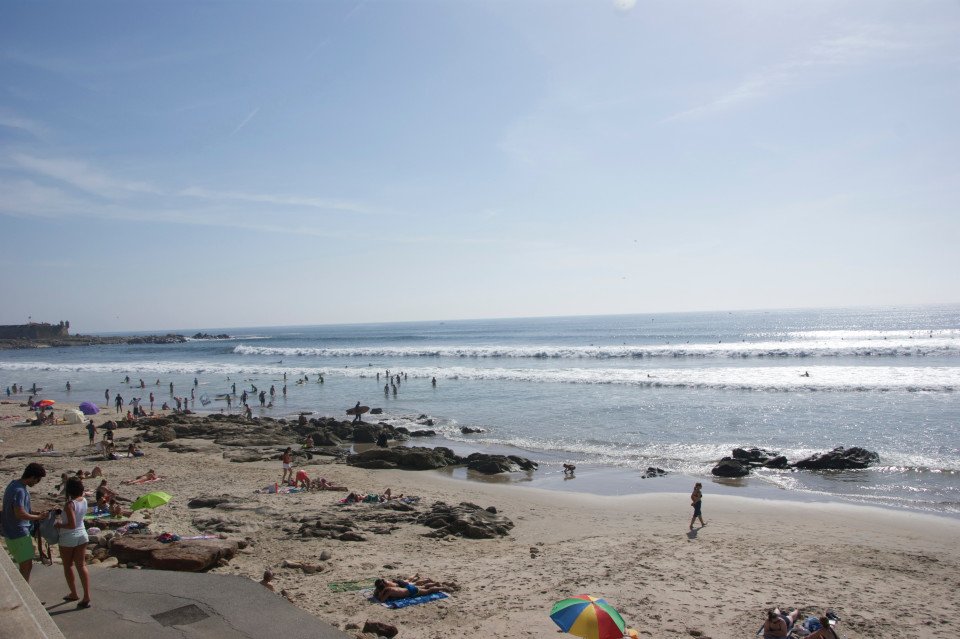
Lively, commercial Oporto is the second largest city in Portugal after Lisbon. Also called Porto for short, the word easily brings to mind the city's most famous product - port wine. Oporto's strategic location on the north bank of the Douro River has accounted for the town's importance since ancient times. The Romans built a fort here where their trading route crossed the Douro, and the Moors brought their own culture to the area. Oporto profited from provisioning crusaders en route to the Holy Land and enjoyed the riches from Portuguese maritime discoveries during the 15th and 16th centuries. Later, port wine trade with Britain compensated for the loss of the spice trade and the end of gold and gem shipments from Brazil. In the 19th century, the city went through a period of new prosperi ... Read More
Lively, commercial Oporto is the second largest city in Portugal after Lisbon. Also called Porto for short, the word easily brings to mind the city's most famous product - port wine. Oporto's strategic location on the north bank of the Douro River has accounted for the town's importance since ancient times. The Romans built a fort here where their trading route crossed the Douro, and the Moors brought their own culture to the area. Oporto profited from provisioning crusaders en route to the Holy Land and enjoyed the riches from Portuguese maritime discoveries during the 15th and 16th centuries. Later, port wine trade with Britain compensated for the loss of the spice trade and the end of gold and gem shipments from Brazil. In the 19th century, the city went through a period of new prosperity with the rise of industries. In its wake followed the building of workers' quarters and opulent residences. Since the declaration of Oporto as a World Heritage Site by UNESCO, the city aims to build up a cultural reference that will provide it with a new image, based on deep historical roots. Among the attractions that make Oporto such an interesting place are its graceful bridges spanning the Douro River, a picturesque riverfront quarter and, most notable, its world-famous port wine lodges. Although Oporto is a bustling centre and home to many different businesses, the source of its greatest fame is the rich, sweet fortified red wine we know as port. ... Show Less
Famed for its 12th Century prestigious university, Salamanca captivates visitors with an impressive blend of history, culture and academia. Home to architectural marvels, such as the ornately decorated Plaza Mayor and stunning Salamanca Cathedral, Salamanca showcases centuries of artistic heritage alongside a lively nightlife buzzing with vibrant tapas bars, cafes and flamenco venues.
... Read MoreFamed for its 12th Century prestigious university, Salamanca captivates visitors with an impressive blend of history, culture and academia. Home to architectural marvels, such as the ornately decorated Plaza Mayor and stunning Salamanca Cathedral, Salamanca showcases centuries of artistic heritage alongside a lively nightlife buzzing with vibrant tapas bars, cafes and flamenco venues.
... Show Less
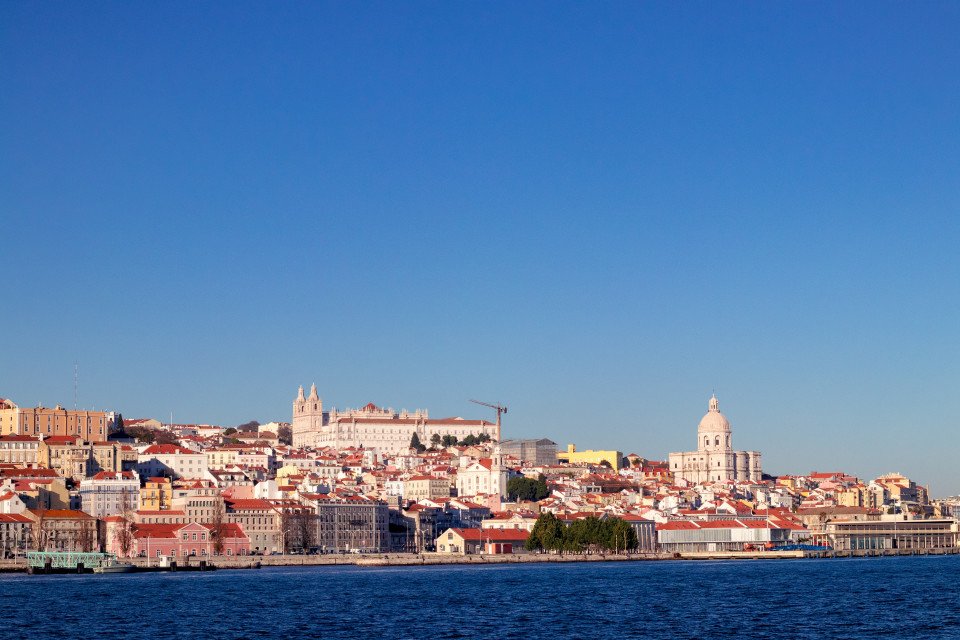
Set on seven hills on the banks of the River Tagus, Lisbon has been the capital of Portugal since the 13th century. It is a city famous for its majestic architecture, old wooden trams, Moorish features and more than twenty centuries of history. Following disastrous earthquakes in the 18th century, Lisbon was rebuilt by the Marques de Pombal who created an elegant city with wide boulevards and a great riverfront and square, Praça do Comércio. Today there are distinct modern and ancient sections, combining great shopping with culture and sightseeing in the Old Town, built on the city's terraced hillsides. The distance between the ship and your tour vehicle may vary. This distance is not included in the excursion grades. ... Read More
Set on seven hills on the banks of the River Tagus, Lisbon has been the capital of Portugal since the 13th century. It is a city famous for its majestic architecture, old wooden trams, Moorish features and more than twenty centuries of history. Following disastrous earthquakes in the 18th century, Lisbon was rebuilt by the Marques de Pombal who created an elegant city with wide boulevards and a great riverfront and square, Praça do Comércio. Today there are distinct modern and ancient sections, combining great shopping with culture and sightseeing in the Old Town, built on the city's terraced hillsides. The distance between the ship and your tour vehicle may vary. This distance is not included in the excursion grades. ... Show Less
Bernkastel-Kues is an enchanting fairytale town situated...
Caudebec-en-Caux, situated along the Seine in the Normand...
Located in the Yvelines department of the Île-de-Fr...
Bernkastel-Kues is an enchanting fairytale town situated...
Caudebec-en-Caux, situated along the Seine in the Normand...
Located in the Yvelines department of the Île-de-Fr...
Bernkastel-Kues is an enchanting fairytale town situated...
Caudebec-en-Caux, situated along the Seine in the Normand...
Located in the Yvelines department of the Île-de-Fr...

Famed for its 12th Century prestigious university, Salamanca captivates visitors with an impressive blend of history, culture and academia. Home to architectural marvels, such as the ornately decorated Plaza Mayor and stunning Salamanca Cathedral, Salamanca showcases centuries of artistic heritage alongside a lively nightlife buzzing with vibrant tapas bars, cafes and flamenco venues.

A gateway to the Douro Valley, Vega de Terrón is a port town offering its visitors access to the breathtaking landscapes and magnificent vineyards of the region. Located close to the Spanish border in North-East Portugal, near the Spanish town of Barca d'Alva, the town serves as a strategic base to explore both Portuguese and Spanish cultural gems.

Situated in the heart of the Douro Valley, Pinhão is a charming riverside town characterised by terraced vineyards and traditional wine estates, locally known as quintas. Visitors are invited to explore historic wineries and savour the rich flavours of the region's iconic port wines.
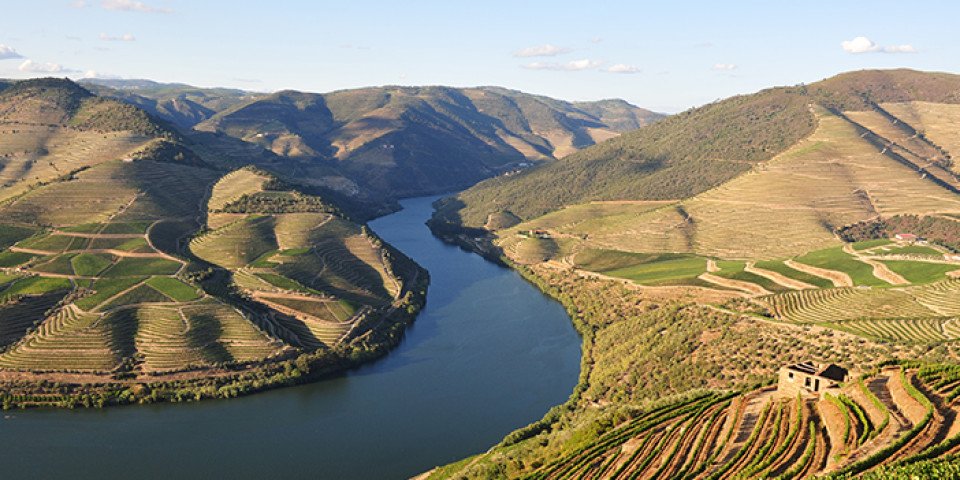
Sometimes known as Peso da Régua, Régua is a key hub situated in the Duoro Valley and serving as a central location for the region's wine production. Home to a number of port wine lodges and museums, the town offers stunning views of the surrounding vineyards combined with a unique insight into the legacy and craftmanship of Portugal's iconic fortified wine.

Nestled amongst the scenic landscape between the Tâmega and Douro rivers, the quaint village of Entre-os-Rios is known for brilliant landscapes and historical bridges. Despite the unfortunate collapse of the Hintze Ribeiro Bridge in 2001, the village has since worked towards reconstruction and emerged as a serene, picturesque destination within the Douro Valley.
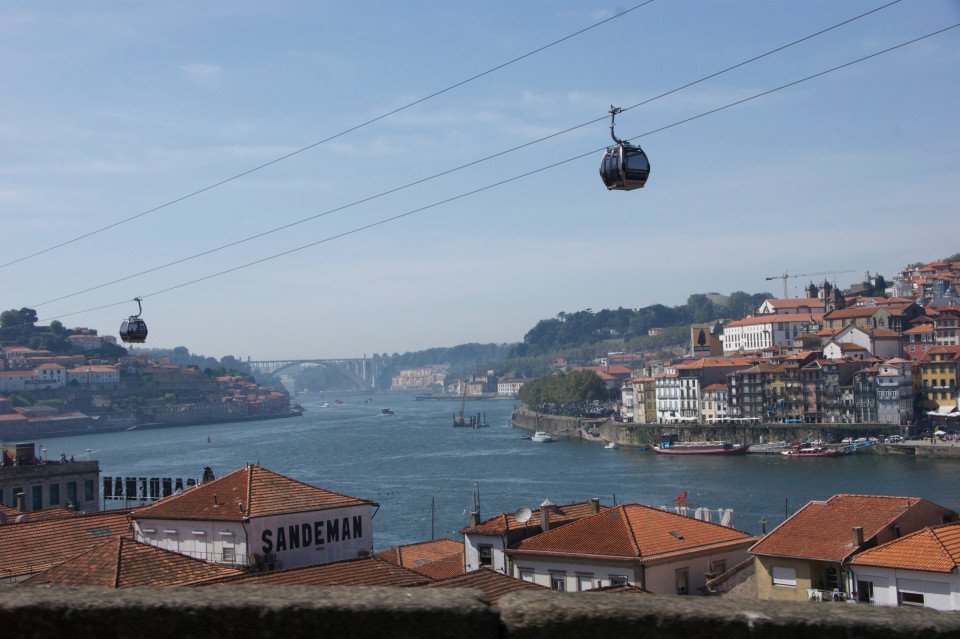
Lively, commercial Oporto is the second largest city in Portugal after Lisbon. Also called Porto for short, the word easily brings to mind the city's most famous product - port wine. Oporto's strategic location on the north bank of the Douro River has accounted for the town's importance since ancient times. The Romans built a fort here where their trading route crossed the Douro, and the Moors brought their own culture to the area. Oporto profited from provisioning crusaders en route to the Holy Land and enjoyed the riches from Portuguese maritime discoveries during the 15th and 16th centuries. Later, port wine trade with Britain compensated for the loss of the spice trade and the end of gold and gem shipments from Brazil. In the 19th century, the city went through a period of new prosperity with the rise of industries. In its wake followed the building of workers' quarters and opulent residences. Since the declaration of Oporto as a World Heritage Site by UNESCO, the city aims to build up a cultural reference that will provide it with a new image, based on deep historical roots. Among the attractions that make Oporto such an interesting place are its graceful bridges spanning the Douro River, a picturesque riverfront quarter and, most notable, its world-famous port wine lodges. Although Oporto is a bustling centre and home to many different businesses, the source of its greatest fame is the rich, sweet fortified red wine we know as port.

Blessed with rural charm, the tranquil village of Barca d'Alva is known for its tranquillity, serenity, and proximity to the Douro River. Situated in northeastern Portugal, the village provides a peaceful starting point for exploring the scenic beauty and vineyard-covered hillsides of the Douro Valley.

Pocinho is a remote village in northern Portugal, along the banks of the Douro River. With its tranquil charm and natural beauty, the village exudes a quaint allure and a sense of peaceful seclusion that offers respite from the hustle and bustle of the world beyond.


Bordeaux as a whole, rather than any particular points within it, is what you'll want to visit in order to understand why Victor Hugo described it as Versailles plus Antwerp, and why the painter Francisco de Goya, when exiled from his native Spain, chose it as his last home (he died here in 1828). The capital of southwest France and the region's largest city, Bordeaux remains synonymous with the wine trade: wine shippers have long maintained their headquarters along the banks of the Garonne, while buyers from around the world arrive for the huge biennial Vinexpo show (held in odd-number years).Bordeaux is, admittedly, a less exuberant city than many others in France, but lively and stylish elements are making a dent in its conservative veneer. The cleaned-up riverfront is said by some, after a bottle or two, to exude an elegance reminiscent of St. Petersburg, and that aura of 18th-century élan also permeates the historic downtown sector—“le vieux Bordeaux"—where fine shops invite exploration. To the south of the city center are old docklands undergoing renewal—one train station has now been transformed into a big multiplex movie theater—but the area is still a bit shady. To get a feel for the historic port of Bordeaux, take the 90-minute boat trip that leaves Quai Louis-XVIII every weekday afternoon, or the regular passenger ferry that plies the Garonne between Quai Richelieu and the Pont d'Aquitaine in summer. A nice time to stroll around the city center is the first Sunday of the month, when it's pedestrian-only and vehicles are banned.


Libourne, France, is a historic town in the Bordeaux wine region, renowned for its vibrant market and beautiful architecture. Located along the Dordogne River, it features a charming blend of medieval and Renaissance buildings, including the striking Church of Saint-Jean-Baptiste. Libourne is a gateway to prestigious wine estates, including Pomerol and Saint-Émilion. The town's bustling market and scenic riverside setting offer a delightful experience for visitors interested in wine, history, and local culture.


Cadillac, France, is a charming town in the Gironde department, known for its historic architecture and vineyards. Famous for its production of sweet white wines, especially Cadillac Côtes de Bordeaux, the town features a well-preserved 18th-century château and picturesque streets. Set along the Garonne River, Cadillac offers scenic views and a rich heritage, blending historical charm with local wine culture. Its vibrant markets and serene atmosphere make it a pleasant destination for those exploring the Bordeaux wine region.


Blaye, France, is a picturesque town in the Gironde department, renowned for its historic Blaye Citadel, a UNESCO World Heritage site with stunning views of the Gironde estuary. The town boasts charming streets, vibrant markets, and renowned vineyards producing exceptional wines, including Blaye Côtes de Bordeaux. Blaye’s blend of historical architecture, scenic river views, and local wine culture makes it an inviting destination for history enthusiasts and wine lovers alike.

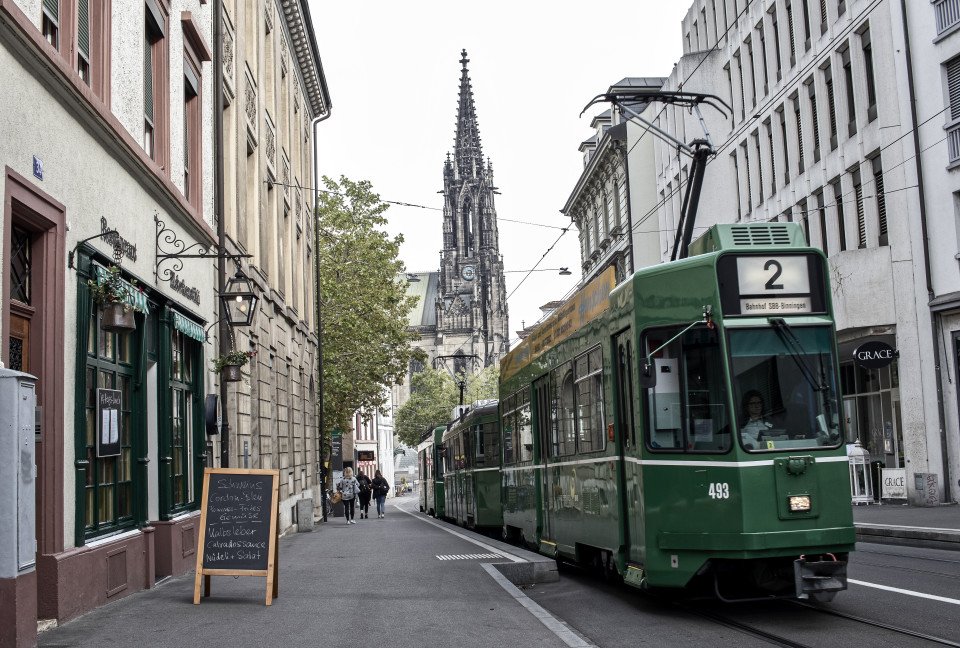
Basel is a city in northwestern Switzerland on the Swiss, French and German borders. It is located on the bend of the River Rhine and benefits from a Mediterranean climate. It is the third most populated city in Switzerland and has been the commercial hub for Swiss arts and culture since the Renaissance. In 1967 the people of Basel voted to acquire two paintings by Picasso, who was so moved by the Basel people that he donated 3 paintings and a study to the city's Kunstmuseum (Museum of Fine Arts). Visit the Augusta Raurica, one of the largest Roman archaeology parks in Switzerland, and enjoy a river crossings over the River Rhine by non-motorised ferries. During the summer months, time is spent outdoors, either swimming in the River Rhine, dining al fresco, enjoying open air concerts, cinema, street parties and festivals. Basel is home to over 20 restaurants that have won GaultMillau or Michelin awards, and boasts Switzerland's largest collection of theatre shows, including modern contemporary dance, touring and puppetry theatre.

Breisach is a town located in Southwest Germany on the French border. The town is situated in the Rhine Valley on the banks of the river Rhine and dates back over four thousand years. Breisach and its history can be experienced through the City History Museum, which houses a permanent exhibition taking you from Stone Age through the Celtic, to the Romans and Middle Ages, right up to modern day. St Stephen's Cathedral is home to the city’s famous art treasures, the wheel wells, which are housed in the neighbouring Radbrunnenturm with the forty one metre deep water well. The cathedral is also home to many other treasures including the High Altar of Master HL and wall paintings by Martin Schongauer as well as High Gothic and Roman architecture. A visit to the Blue House, the former Jewish Community Centre, is highly recommended. Now owned by the Friends of Former Jewish Community House Breisach it exhibits memorials to Breisach’s Jewish heritage.

Kehl is a town located in southwest Germany on the River Rhine, across from the French City of Strasbourg. The town is not known as a tourist destination, however it benefits from idyllic landscape and a water-rich environment. Walk or cycle along the Reinpromenade or the garden of the Zweubüchter and enjoy a picnic at one of Kehl’s numerous excavation lakes. Nature lovers will enjoy spotting animals hiding along the rivers, lakes and bushes. Discover Kehl’s turbulent war and peace history with a guided tour of the centre and its surrounding villages. Visitors will also experience the town’s habitat and culture which is characterised through the half timbered houses and streets. Kehl town centre features a large pedestrian zone with many retail outlets, street cafes and outdoor dining to enjoy. A few minutes by public transport and visitors will find themselves in the centre of metropolitan Strasbourg.
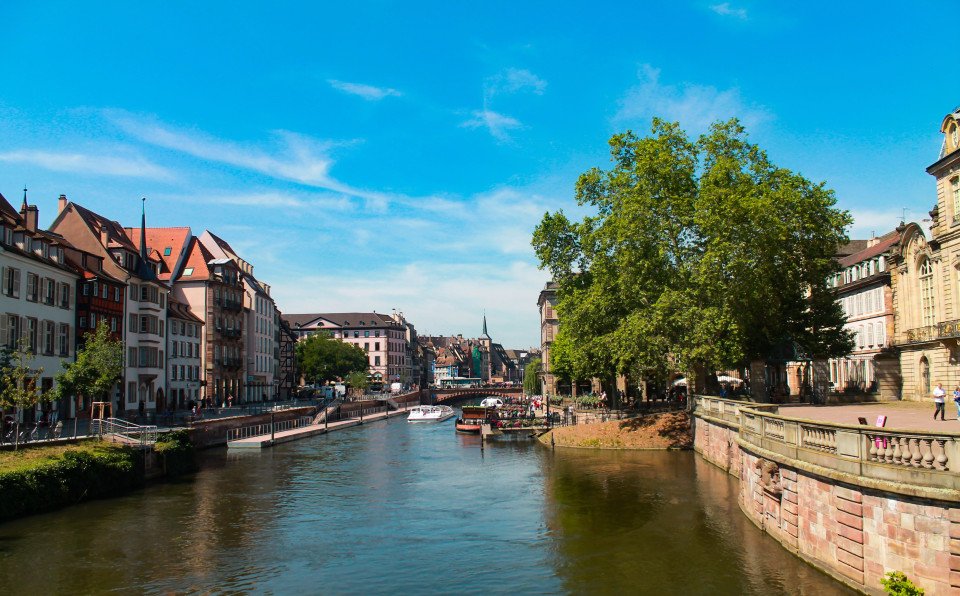
Strasbourg is a picturesque city in northeastern France, notable for its unique blend of French and German influences. Thanks to well-preserved, awe-inspiring medieval architecture such as the stunning Strasbourg Cathedral and the historic La Petite France district, Strasbourg has earned its spot on the map as a famous, must-visit European destination.

Mannheim, Germany, is a dynamic city known for its distinctive grid layout and vibrant cultural scene. Located at the confluence of the Rhine and Neckar rivers, it features the impressive Mannheim Palace and the lush Luisenpark. The city's modern architecture contrasts with its historical roots, while its thriving arts scene includes theaters, museums, and music festivals. Mannheim is also a key industrial and commercial hub, making it a blend of cultural richness and economic vitality.
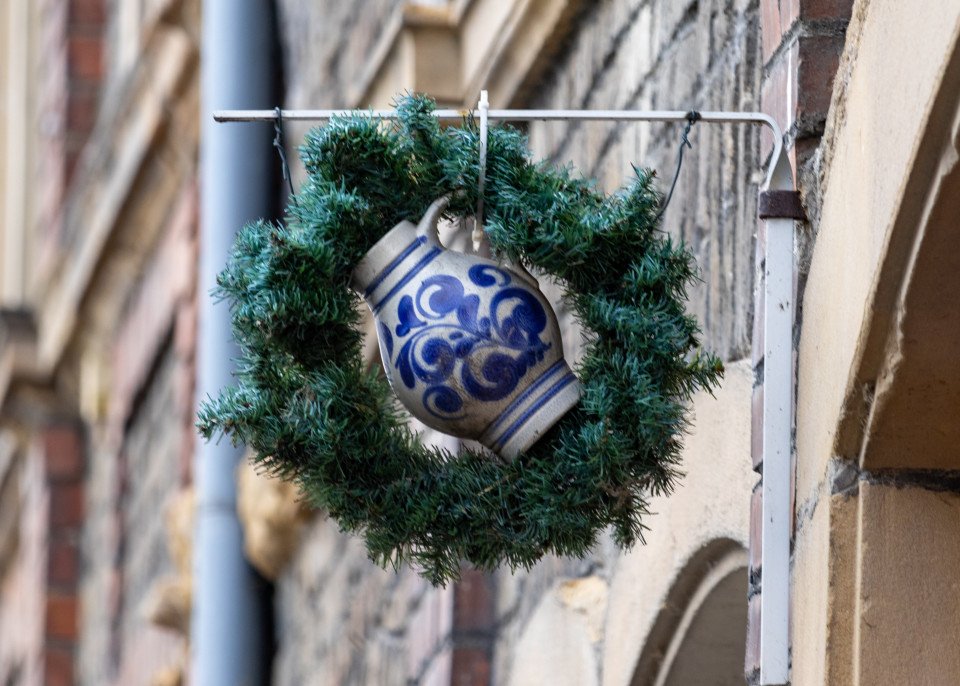
Rüdesheim is a popular stop on the Rhine, renowned for vineyards and medieval architecture. A notable feature of the town's vibrant cultural scene is the Drosselgasse, a narrow street paved with cobblestone and lined with wine taverns and local retailers, showcasing a delightful combination of local wine and traditional German hospitality. Encompassed by rolling vineyards and adorned with historic landmarks, Rüdesheim provides a quintessential German experience in a setting that seamlessly marries natural beauty with cultural richness.
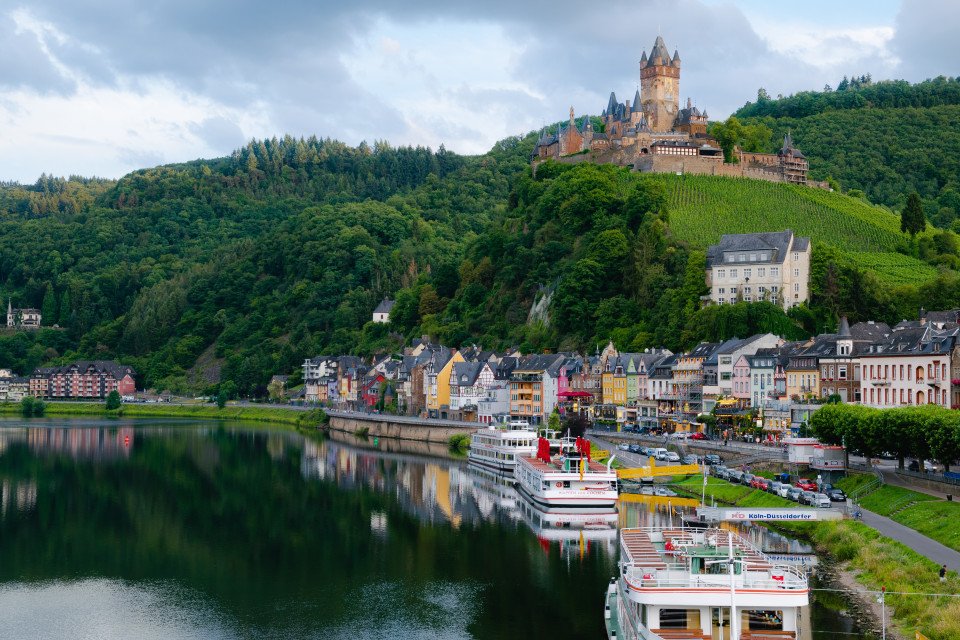
A town characterised by enchanting medieval charm, Cochem sits along the stunning Moselle River in Germany, overlooked by the fascinating hilltop Reichsburg Castle. Cochem's skyline looks as though it were lifted directly from a postcard, decorated with half-timbered houses, charming streets and the Moselle river meandering alongside. A reputable hub for impeccable Riesling wines, Cochem is also famed for its local vineyards, offering visitors a taste of traditional German wine production.
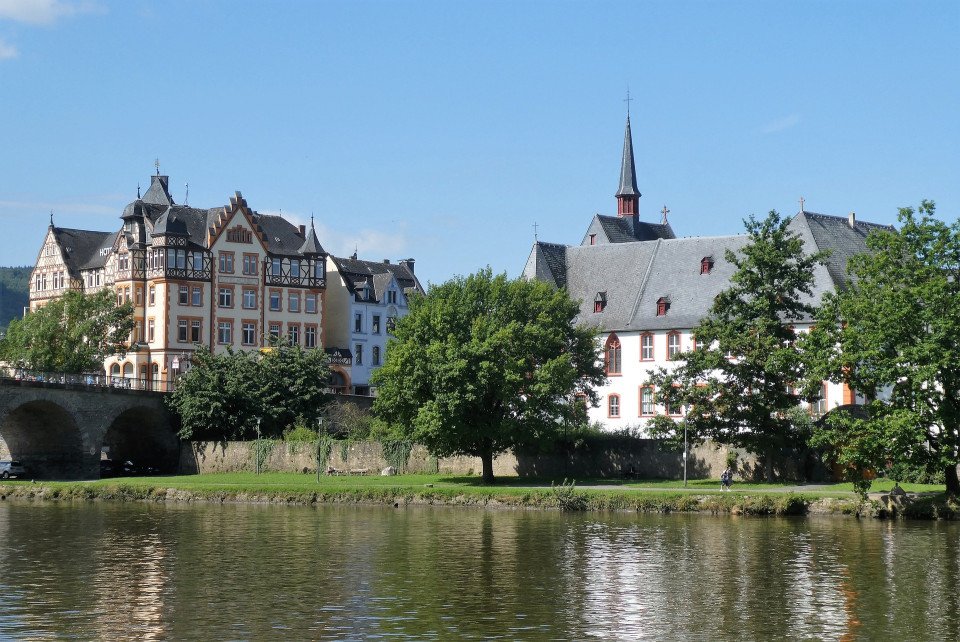
Bernkastel-Kues is an enchanting fairytale town situated along the Moselle River, Germany, with streets paved with cobblestone and lined with half-timbered houses. Famed for its medieval architecture, the lively market square is home to the iconic Spitzhäuschen (Pointed House), a narrow, gabled timber-framed building dating back to the 15th century. Alongside its rich cultural heritage, the town is renowned for its vineyards and wine production, offering its visitors delightful wine-tasting experiences and stunning views of the surrounding vine-covered hills.
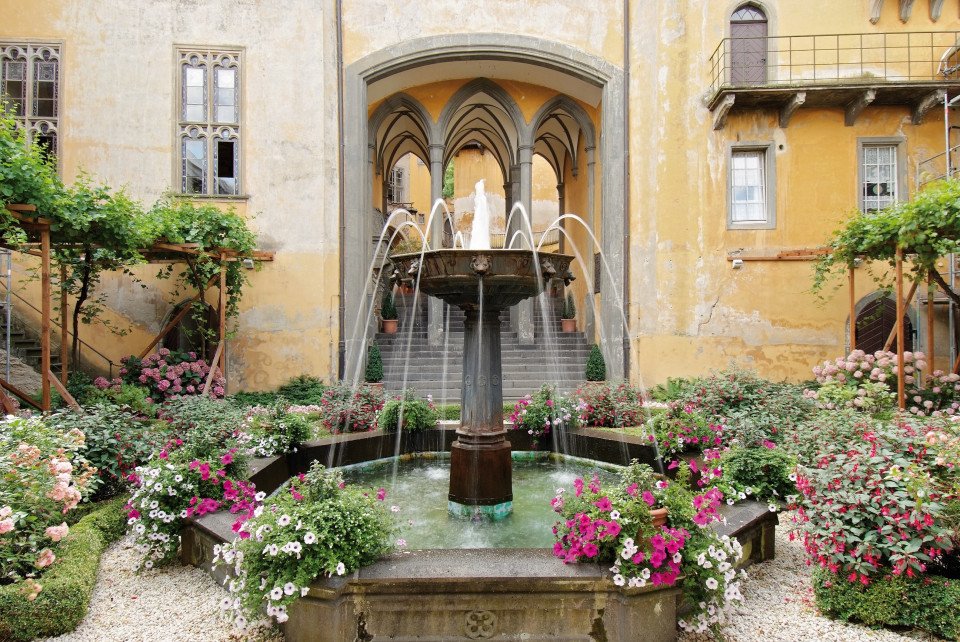
Located in the West of the country, Koblenz is one of the oldest cities in Germany. It is situated on both banks of the river Rhine, at its confluence with the Moselle River. The beginnings of Koblenz can be traced back to its military beginnings around 8 BC. The city is rich in its history and heritage and is easily explored on foot. Take the cable car crossing over the river Rhine for spectacular aerial views or enjoy the city from the one thousand year old fortress, Ehrenbreitstein. The upper middle Rhine Valley is a UNESCO World Heritage Site and its unique landscape can be enjoyed and discovered through the interactive multimedia journey at the Romanticum. Historical and architectural sites of interest include Stolzenfels Castle, the Electoral Palace of Koblenz and Old Town. From the romantic winding streets and small squares of Old Town, stroll through the alleyways from the Church of the Holy Virgin to the St Kastor Basilica and enjoy the picturesque buildings and squares along the way. Koblenz is also very popular for its Riesling and strong Spatburgunder wines since the Romans introduced it two thousand years ago.

World-renowned for its vivacious arts and fashion scene, Düsseldorf sits along the Rhine River in western Germany and beautifully blends contemporary architecture with historic significance, offering its visitors a wonderfully diverse experience. Düsseldorf boasts an array of museums, galleries and boutiques, making it a key cultural hub.

Nijmegen, one of the oldest cities in the Netherlands, boasts a rich cultural heritage and stunning landscapes, adorned with Roman ruins such as Valkhof Park, offering a glimpse into the city's ancient past. The bustling city centre is populated by quaint cafes, boutique shops and lively squares that burst with activity year-round.
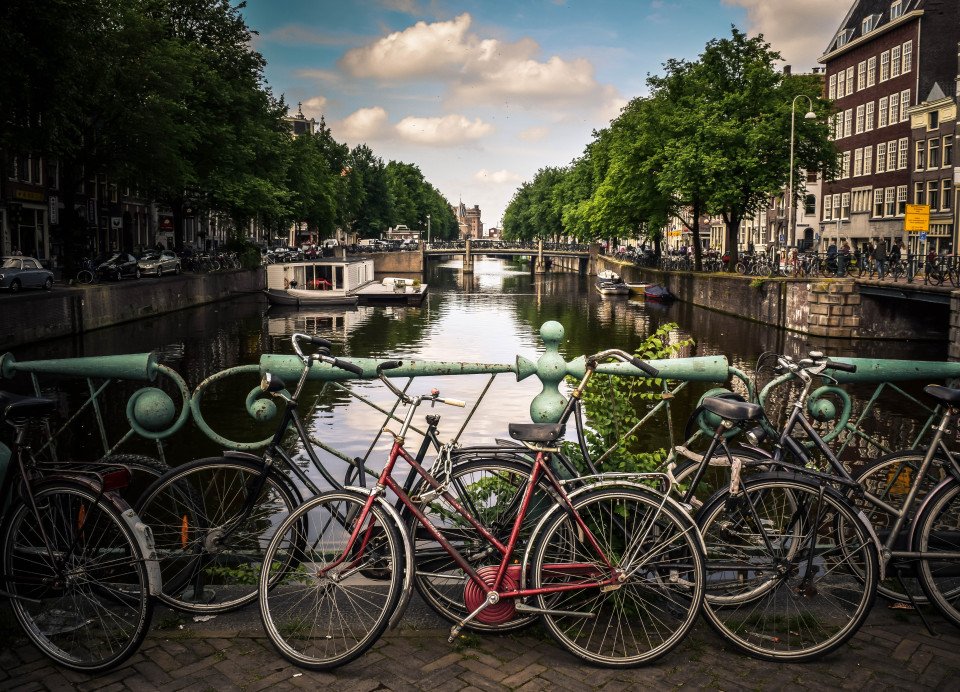
Amsterdam combines the unrivaled beauty of the 17th-century Golden Age city center with plenty of museums and art of the highest order, not to mention a remarkably laid-back atmosphere. It all comes together to make this one of the world's most appealing and offbeat metropolises in the world. Built on a latticework of concentric canals like an aquatic rainbow, Amsterdam is known as the City of Canals—but it's no Venice, content to live on moonlight serenades and former glory. Quite the contrary: on nearly every street here you'll find old and new side by side—quiet corners where time seems to be holding its breath next to streets like neon-lit Kalverstraat, and Red Light ladies strutting by the city's oldest church. Indeed, Amsterdam has as many lovely facets as a 40-carat diamond polished by one of the city's gem cutters. It's certainly a metropolis, but a rather small and very accessible one. Locals tend to refer to it as a big village, albeit one that happens to pack the cultural wallop of a major world destination. There are scores of concerts every day, numerous museums, summertime festivals, and, of course, a legendary year-round party scene. It's pretty much impossible to resist Amsterdam's charms. With 7,000 registered monuments, most of which began as the residences and warehouses of humble merchants, set on 160 man-made canals, and traversed by 1,500 or so bridges, Amsterdam has the largest historical inner city in Europe. Its famous circle of waterways, the grachtengordel, was a 17th-century urban expansion plan for the rich and is a lasting testament to the city’s Golden Age. This town is endearing because of its kinder, gentler nature—but a reputation for championing sex, drugs, and rock ’n’ roll does not alone account for Amsterdam's being one of the most popular destinations in Europe: consider that within a single square mile the city harbors some of the greatest achievements in Western art, from Rembrandt to Van Gogh. Not to mention that this is one of Europe's great walking cities, with so many of its treasures in the untouted details: tiny alleyways barely visible on the map, hidden garden courtyards, shop windows, floating houseboats, hidden hofjes(courtyards with almshouses), sudden vistas of church spires, and gabled roofs that look like so many unframed paintings. And don’t forget that the joy lies in details: elaborate gables and witty gable stones denoting the trade of a previous owner. Keep in mind that those XXX symbols you see all over town are not a mark of the city's triple-X reputation. They're part of Amsterdam's official coat of arms—three St. Andrew's crosses, believed to represent the three dangers that have traditionally plagued the city: flood, fire, and pestilence. The coat's motto ("Valiant, determined, compassionate") was introduced in 1947 by Queen Wilhelmina in remembrance of the 1941 February Strike in Amsterdam—the first time in Europe that non-Jewish people protested against the persecution of Jews by the Nazi regime.

Explore Antwerp, Belgium's second city. Known for its diamond cutting industry, fashion and the many great artists that lived in its vicinity, Antwerp is a city focused on art and culture.

Utrecht is a city in the Netherlands, known for its medieval center. It has tree-lined canals, Christian monuments and a venerable university. The iconic Domtoren, a 14th-century bell tower with city views, stands opposite the Gothic Cathedral of St. Martin on central Domplein square. The Museum Catharijneconvent shows religious art and artifacts in a former monastery.


The city of Zurich, a global center for banking and finance, lies at the north end of Lake Zurich in northern Switzerland. The picturesque lanes of the central Altstadt (Old Town), on either side of the Limmat River, reflect its pre-medieval history. Waterfront promenades like the Limmatquai follow the river toward the 17th-century Rathaus
-custom_banner-banner_half.jpg)
Lyon, the capital city in France’s Auvergne-Rhône-Alpes region, sits at the junction of the Rhône and Saône rivers. Its center reflects 2,000 years of history from the Roman Amphithéâtre des Trois Gaules, medieval and Renaissance architecture in Vieux (Old) Lyon, to the modern Confluence district on Presqu'île peninsula. Traboules, covered passageways between buildings, connect Vieux Lyon and La Croix-Rousse hill.

Birthplace of the renowned photography pioneer Nicéphore Niépce, Chalon-sur-Saône celebrates its rich artistic legacy with museums and galleries showcasing the art form. Situated in France's Burgundy region, the town offers opportunities for scenic walks along the riverbanks, indulging in the region's renowned Burgundian cuisine and wines, and an authentic French experience in a town brimming with history and charm.

Tournus, characterised by Romanesque architecture and the iconic Abbey of Saint-Philibert, is a historical town situated in the Saône-et-Loire department. Its cultural significance exudes through its well-preserved structures, and visitors find themselves immersed in vibrant local markets showcasing regional produce, or enjoying serene walks along the stunning Saône River.

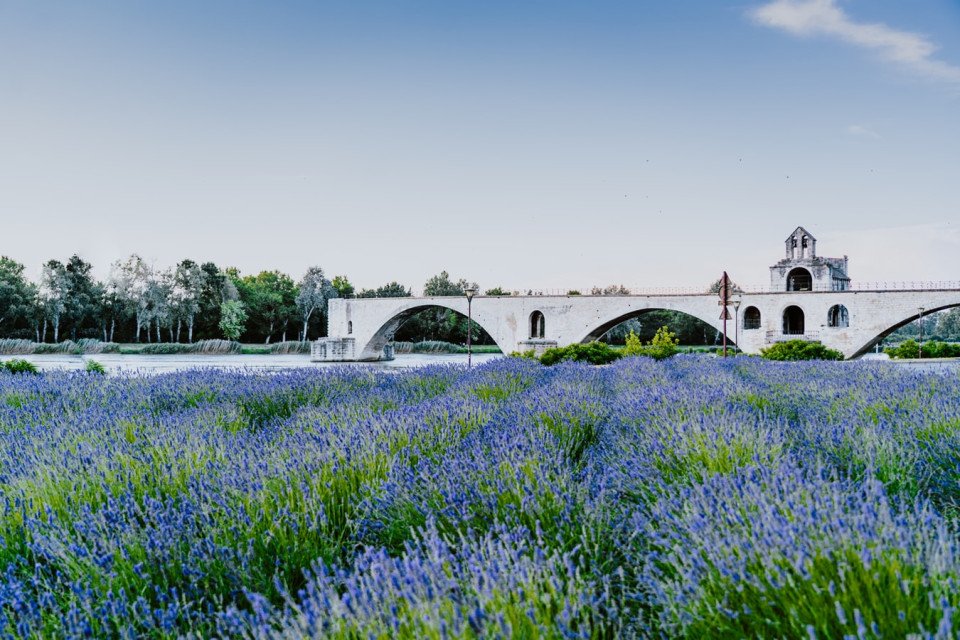
Avignon, France, is a historic city in Provence famed for its stunning medieval architecture. Dominated by the impressive Palais des Papes, a grand papal palace, and the iconic Pont Saint-Bénézet bridge, Avignon offers a rich cultural heritage. Its charming streets, vibrant markets, and annual theater festival, the Festival d'Avignon, add to its allure. Surrounded by picturesque vineyards and the Rhône River, Avignon blends history with a lively contemporary atmosphere, making it a must-visit for history enthusiasts and culture seekers.

Arles, France, is a historic city in Provence renowned for its Roman heritage and artistic legacy. The ancient amphitheater and the Roman Theater are standout landmarks. Arles also boasts charming streets and vibrant markets, reflecting its rich cultural life. Known for its connection to Vincent van Gogh, the city features scenes immortalized in his paintings. The blend of historical architecture, vibrant local culture, and picturesque landscapes makes Arles a captivating destination for history buffs and art enthusiasts alike.

Viviers, France, is a charming medieval town in the Rhône-Alpes region, renowned for its well-preserved historical architecture. Nestled on the banks of the Rhône River, it features narrow, winding streets, ancient stone houses, and the impressive Saint-Vincent Cathedral. The town's Roman and medieval heritage is evident in its old ramparts and historic buildings. Viviers' tranquil atmosphere and picturesque surroundings offer a glimpse into the past, making it a delightful destination for history lovers and those seeking a serene escape.

Set on seven hills on the banks of the River Tagus, Lisbon has been the capital of Portugal since the 13th century. It is a city famous for its majestic architecture, old wooden trams, Moorish features and more than twenty centuries of history. Following disastrous earthquakes in the 18th century, Lisbon was rebuilt by the Marques de Pombal who created an elegant city with wide boulevards and a great riverfront and square, Praça do Comércio. Today there are distinct modern and ancient sections, combining great shopping with culture and sightseeing in the Old Town, built on the city's terraced hillsides. The distance between the ship and your tour vehicle may vary. This distance is not included in the excursion grades.

United with France only since 1860, Nice has its own history and atmosphere, which dates back 230,000 years. It was on Colline du Château (now château-less) and at the Plage des Ponchettes, in front of the Old Town, that the Greeks established a market-port in 350 BC and named it Nikaia, which would become Marseilles' chief coastal rival. The Romans established themselves a little later on the hills of Cimiez (Cemenelum), already previously occupied by Ligurians and Celts, and quickly overshadowed the waterfront port. After falling to the Saracen invasions, Nice regained power as an independent state, becoming an important port in the early Middle Ages. So cocksure did it become that in 1388, Nice, along with the hill towns behind, effectively seceded from the county of Provence, under Louis d'Anjou, and allied itself with Savoie. Thus began its liaison with the House of Savoy, and through it with Piedmont and Sardinia, it was the Comté de Nice (Nice County). This relationship lasted some 500 years, tinting the culture, architecture, and dialect in rich Italian hues. By the 19th century Nice was flourishing commercially, locked in rivalry with the neighbouring shipping port of Genoa. Another source of income: the dawning of tourism, as first the English, then the Russian nobility, discovered its extraordinary climate and superb waterfront position. A parade of fine stone mansions and hotels closed into a nearly solid wall of masonry, separated from the smooth-round rocks of the beach by what was originally named Camin deis Anglés (the English Way), which of course is now the famous Promenade des Anglais. This magnificent crescent, which is seeking UNESCO recognition, is one of the noblest in France. Many of Nice's most delightful attractions—the Cours Saleya market, the Old Town streets, the Hotel Negresco, and the Palais Masséna—are on or close to this 10-km (6-mile) waterfront, making it the first stop for most visitors, while the redevelopment of Nice's port, around the other side of the Colline du Château, makes it easier for amblers who want to take in the Genoese architecture or peruse the antiques at the Puces de Nice, now part of the Promenade des 100 Antiquaires, along Quai Papacino. Nice also has the distinction of the "Family Plus" label, with free strollers, play areas, and restaurants with child-friendly activities.

Renowned for its wine heritage, prestigious vineyards and medieval past, Beaune is a stunning town in the heart of the Burgundy wine region that exudes quaint charm and a unique, traditional Burgundian-Flemish feel. With cobbled streets and historic architecture, Beaune offers a wealth of sights to explore and a vibrant culinary scene, all against a backdrop of timeless beauty.
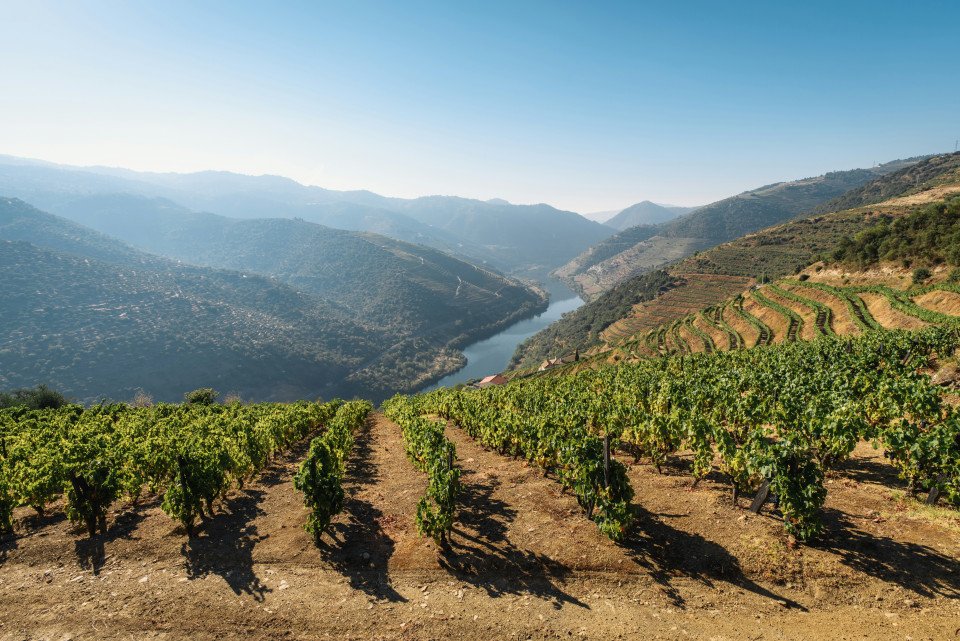



France's iconic and enchanting capital, Paris, is a globally recognised symbol of art, culture and romance, sitting along the banks of the river Seine. Home to world-famous landmarks including the Eiffel Tower, Louvre Museum and the Notre-Dame Cathedral, Paris is a beacon of timeless elegance, cultural richness and historical magnitude. Affectionately named the City of Light and the City of Love, Paris enchants with its stunning boulevards, charming cafes and world-class culinary scene, with the Seine gracefully winding through the city and further enhancing the romantic allure. The artistic haven of Monmartre contributes to the city's heritage and status as a global symbol of fashion, art and culinary excellence, serving as an epitome of sophistication in a destination that seamlessly intertwines history and modernity.
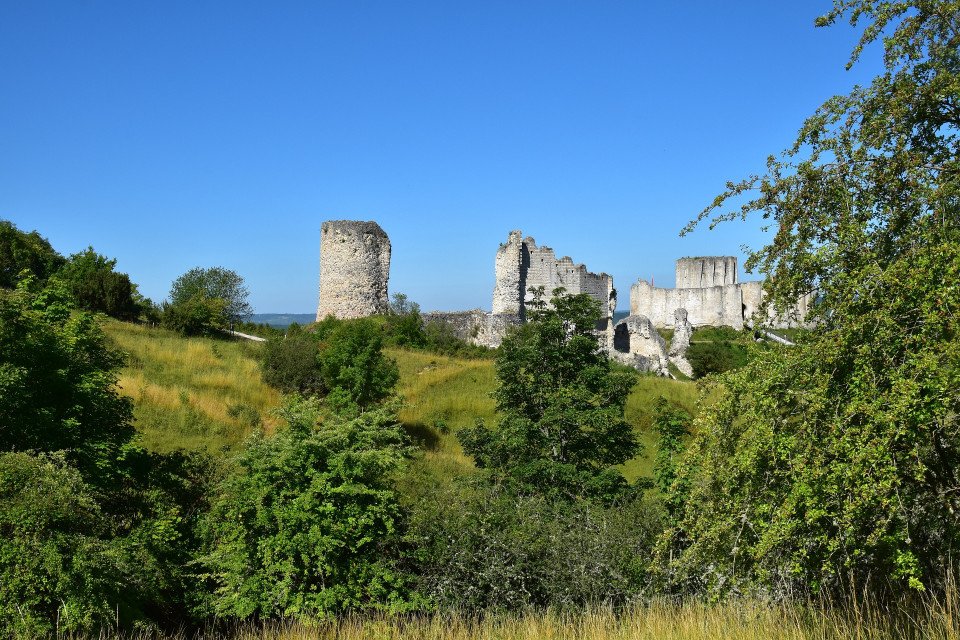
Situated in France's Normandy region, Les Andelys is an enchanting town along the banks of the Seine River. Characterised by its stunning river views and the monumental Château Gaillard, a medieval fortress built by Richard the Lionheart, the town attracts history enthusiasts and nature lovers alike thanks to its quaint streets, half-timbered houses ands vibrant market square.
-custom_banner-banner_half.jpg)
Adorned with stunning Gothic architecture, Rouen is a city steeped in history situated in the Normandy region of France. Notable city landmarks include the breath-taking Rouen Cathedral, immortalised by Claude Monet's artwork, and the medieval astronomical clock, the Gros-Holorge. The charming old town paved with cobblestone and lined with half-timbered houses only serves to enhance the medieval charm, providing a fitting backdrop to the city's rich cultural heritage and associations with iconic figures such as Joan of Arc, seamlessly blending historical implication with French provincial charm.

Honfleur, the most picturesque of the Côte Fleurie's seaside towns, is a time-burnished place with a surplus of half-timber houses and cobbled streets that are lined with a stunning selection of stylish boutiques. Much of its Renaissance architecture remains intact—especially around the 17th-century Vieux Bassin harbor, where the water is fronted on one side by two-story stone houses with low, sloping roofs and on the other by tall slate-topped houses with wooden facades. Maritime expeditions (including some of the first voyages to Canada) departed from here; later, Impressionists were inspired to capture it on canvas. But the town as a whole has become increasingly crowded since the Pont de Normandie opened in 1995. Providing a direct link with Upper Normandy, the world's sixth-largest cable-stayed bridge is supported by two concrete pylons taller than the Eiffel Tower and designed to resist winds of 257 kph (160 mph).

Caudebec-en-Caux, situated along the Seine in the Normandy region of France, is a charming town known for its medieval charm, half-timbered houses and wonderful blend of history and beauty. The impressive Gothic architecture of The Church of Saint-Pierre is a particular highlight, with its breath-taking façade and panoramic views of the Seine valley.

Situated in the Normandy region of France alongside the river Seine, Vernon is a must-visit town best known for the iconic Monet's Garden at Giverny, located just a short distance away. Within the town, art enthusiasts and nature lovers are enchanted by timber-framed houses, a medieval bridge and the awe-inspiring Collegiate Church of Our Lady.


Located in the Yvelines department of the Île-de-France region in France, at the confluence of the Seine and Oise rivers, Conflans-Sainte-Honorine is a charming town with a stunning waterfront and breath-taking views. Steeped in maritime history, Conflans-Sainte-Honorine is home to the Musée de la Batellerie, a museum that chronicles the history of river navigation.




Whether you pronounce it Seville or Sevilla, this gorgeous Spanish town is most certainly the stuff of dreams. Over 2,200 years old, Seville has a mutli-layered personality; home to Flamenco, high temperatures and three UNESCO-World Heritage Sites, there is a noble ancestry to the southern Spanish town. Not forgetting that it is the birthplace of painter Diego Velazquez, the resting place of Christopher Columbus, the inspiration for Bizet’s Carmen and a location for Game of Thrones filming, Seville is truly more than just a sum of its parts. This city is a full on experience, a beguiling labyrinth of centuries old streets, tiny tapas restaurants serving possibly the best dishes you’ll taste south of Madrid and a paradise of Mudejar architecture and tranquil palm trees and fountain-filled gardens.

Sitting on the banks of the Saône River is Mâcon, a stunning town in the Burgundy region best known for its wine production. Characterised by its enchanting streets, lively markets and iconic historic landmarks, including the Saint-Pierre Church. Not only is Mâcon a charming town, it is also a significant hub for the wine industry situated amidst the world-famous vineyards of Burgundy, inviting visitors to explore the local vineyards and wineries and to indulge in tastings of the region's exquisite white wines.

The infinite variety of street life, the nooks and crannies of the medieval Barri Gòtic, the ceramic tile and stained glass of Art Nouveau facades, the art and music, the throb of street life, the food (ah, the food!)—one way or another, Barcelona will find a way to get your full attention. The capital of Catalonia is a banquet for the senses, with its beguiling mix of ancient and modern architecture, tempting cafés and markets, and sun-drenched Mediterranean beaches. A stroll along La Rambla and through waterfront Barceloneta, as well as a tour of Gaudí's majestic Sagrada Famíliaand his other unique creations, are part of a visit to Spain's second-largest city. Modern art museums and chic shops call for attention, too. Barcelona's vibe stays lively well into the night, when you can linger over regional wine and cuisine at buzzing tapas bars.
